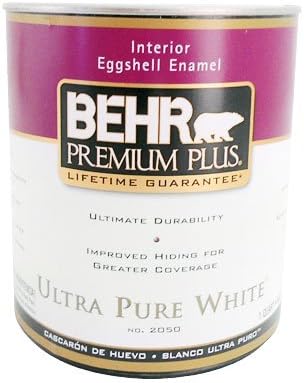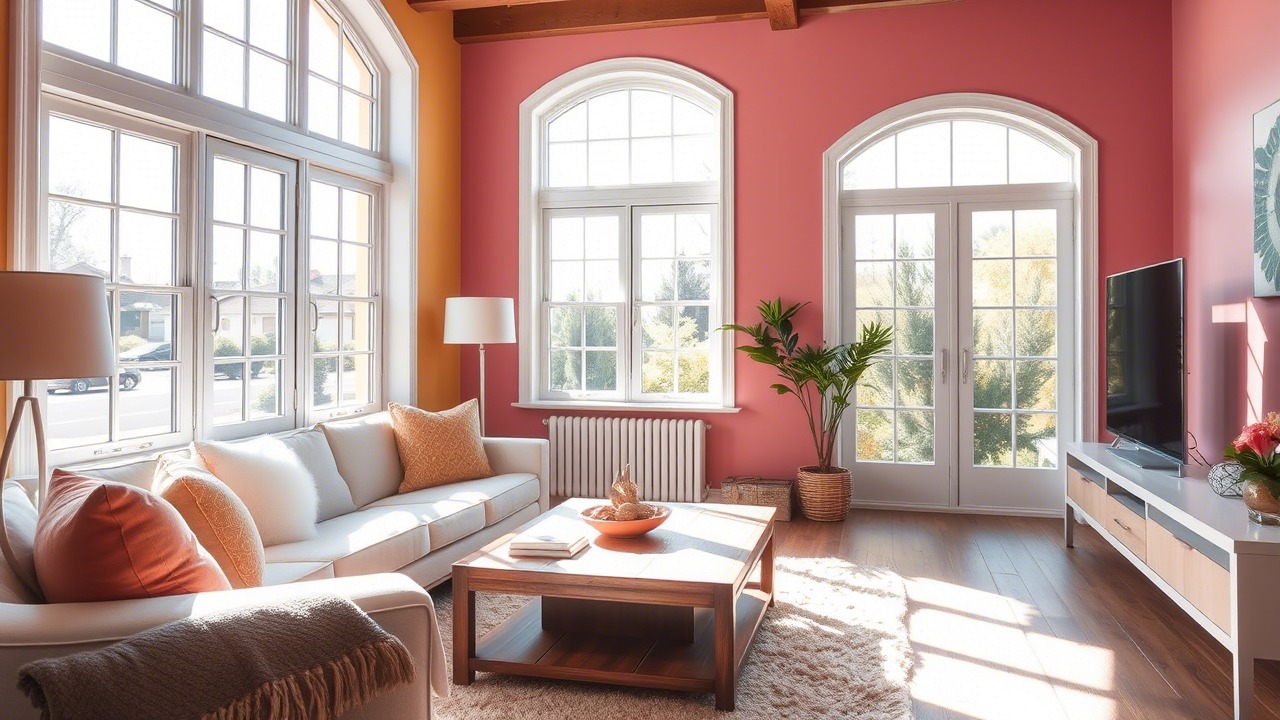Best Paint for PVC Pipes – Ultimate Review and Buying Guide 2025
PVC pipes are a staple in plumbing, irrigation, and many DIY projects. Their durability and affordability make them a popular choice, but often, for aesthetic or protective reasons, painting PVC pipes becomes necessary. Whether you’re working on an outdoor irrigation system or indoor plumbing, choosing the best paint for PVC pipes is essential to ensure longevity, durability, and a neat finish.
We’ll cover everything you need to know about painting PVC pipes types of paint, preparation tips, best product picks, and FAQs to clear up common doubts. Let’s dive in!
Why Paint PVC Pipes?
PVC (polyvinyl chloride) pipes are naturally white or gray and can sometimes look plain or industrial. Painting them offers several benefits:
- Aesthetic Appeal: Paint can match pipes with your home’s decor or garden setting.
- UV Protection: Outdoor PVC pipes can degrade under direct sunlight; certain paints protect them from UV damage.
- Additional Durability: Paint adds an extra layer that can protect pipes from scratches, dirt, and weather.
- Color Coding: For industrial or large plumbing setups, different colors can mark pipe functions.
But PVC is a plastic, which means not all paints will stick well or last long without proper prep and the right formula. This is why picking the best paint for PVC pipes matters.
What Makes Paint Suitable for PVC Pipes?
When choosing paint for PVC, consider these factors:
- Adhesion: PVC is non-porous and smooth, so paint must adhere well. Some paints are specially formulated for plastics.
- Flexibility: PVC can expand and contract slightly; flexible paint reduces cracking.
- UV Resistance: For outdoor pipes, paint that resists fading and degradation from sunlight is important.
- Water and Chemical Resistance: Pipes often face moisture and cleaning chemicals.
- Durability: Paint should be hard-wearing, especially for exposed pipes.
- Ease of Application: Spray paints or brush-on paints formulated for plastics simplify the process.
Types of Paint for PVC Pipes
Here are the main types of paint you’ll find suitable for PVC:
1. Acrylic Latex Paint
- Water-based and flexible.
- Good adhesion with proper surface prep.
- UV resistant if labeled exterior-grade.
- Easy clean-up and low odor.
- Ideal for indoor and some outdoor applications.
2. Spray Paint for Plastic
- Specially designed spray paints adhere well to plastics.
- Fast drying and smooth finish.
- Great for intricate or hard-to-reach areas.
- Often comes with UV protection.
- Examples: Krylon Fusion for Plastic, Rust-Oleum Painter’s Touch.
3. Epoxy Paint
- Durable and chemical resistant.
- Used for pipes exposed to harsh environments.
- Requires careful mixing and application.
- Provides a hard, glossy finish.
4. Oil-Based Paint
- Strong adhesion but longer drying time.
- Less flexible, can crack on PVC.
- Usually not the first choice but workable with primer.
5. Specialized PVC Paints or Primers
- Some brands make primers and paints specifically for PVC.
- Ensure adhesion and long-lasting results.
- Often come in kits.
How to Prepare PVC Pipes for Painting
Preparation is key to success. Follow these steps for best results:
1. Clean the Surface
- Remove dirt, dust, grease, or oil using mild detergent and water.
- For outdoor pipes, remove mildew or algae with a scrub brush.
- Rinse and let dry completely.
2. Lightly Sand the PVC
- Use fine-grit sandpaper (220 grit) to roughen the surface.
- This creates “tooth” for paint adhesion.
- Wipe away sanding dust with a damp cloth.
3. Apply Primer (Optional but Recommended)
- Use a plastic primer or a PVC-specific primer.
- This step greatly improves paint adhesion.
- Allow primer to dry as per instructions.
4. Paint Application
- Apply paint in thin, even coats.
- Use spray paint for an even finish or brush for control.
- Let each coat dry before applying the next.
- Two to three coats typically yield the best results.
Top 5 Best Paints for PVC Pipes in 2025
Here are the top-rated paints for PVC pipes based on adhesion, durability, and user reviews.
1. Krylon Fusion for Plastic Spray Paint

- Type: Spray paint designed specifically for plastics.
- Features: Excellent adhesion without primer, UV resistant, smooth finish.
- Pros: Quick drying, available in multiple colors, durable.
- Cons: Spray paint requires good ventilation and careful application.
- Best for: Indoor and outdoor PVC pipes, DIY projects.
2. Rust-Oleum Painter’s Touch Ultra Cover 2X

- Type: Multi-surface spray paint, plastic-friendly.
- Features: High coverage, durable, resistant to chipping and fading.
- Pros: Wide color range, quick drying.
- Cons: Primer recommended for best adhesion on PVC.
- Best for: Home projects requiring vibrant colors and smooth finish.
3. Behr Premium Plus Ultra Exterior Paint

- Type: Acrylic latex paint.
- Features: Mold and mildew resistant, excellent UV protection.
- Pros: Water-based, easy cleanup, flexible.
- Cons: Requires primer on PVC.
- Best for: Outdoor pipes and siding with color matching needs.
4. Rust-Oleum 207099 Plastic Primer Spray

- Type: Primer specifically for plastic surfaces.
- Features: Improves adhesion of topcoat paints.
- Pros: Essential step for spray or brush paint on PVC.
- Cons: Must be used with compatible topcoat.
- Best for: Preparing PVC for paint for best durability.
5. Valspar Plastic Spray Paint

- Type: Spray paint for plastic surfaces.
- Features: Durable finish, good adhesion.
- Pros: Affordable, good color options.
- Cons: Needs primer for PVC.
- Best for: Cost-effective paint solution for PVC pipes.
Step-by-Step Guide: How to Paint PVC Pipes
Let’s put it all together in a clear, actionable guide:
What You Need:
- Mild detergent
- Sandpaper (220 grit)
- Plastic primer (optional but recommended)
- Paint (spray or brush-on)
- Drop cloths and painter’s tape
- Protective gear (gloves, mask)
Steps:
- Clean: Wash pipes thoroughly and dry.
- Sand: Lightly sand to roughen surface.
- Prime: Apply primer evenly, let dry fully.
- Paint: Spray or brush on first coat; thin and even.
- Dry: Allow to dry as per instructions.
- Repeat: Apply second and possibly third coats.
- Cure: Let the paint cure for at least 24 hours before handling.
Additional Tips for Painting PVC Pipes
- Avoid painting PVC pipes that carry drinking water or food-grade liquids.
- Paint indoors in a well-ventilated area or outdoors on a calm day.
- If painting outdoors, consider the weather—avoid rain or high humidity.
- Always test paint on a small piece of PVC first to check adhesion.
- Use protective gloves and masks when spraying paint.
Frequently Asked Questions
1. Can you paint PVC pipes without primer?
You can, but it’s not recommended. Primer improves adhesion and durability, especially for outdoor use. Some spray paints like Krylon Fusion claim primer isn’t needed, but primer is a safer choice for long-lasting results.
2. What is the best type of paint for outdoor PVC pipes?
UV-resistant acrylic latex paints or specialized plastic spray paints with UV protection are best. They resist sun damage and last longer.
3. How long does paint last on PVC pipes?
With proper prep and quality paint, expect 3–5 years outdoors and longer indoors. Regular maintenance may extend this.
4. Is spray paint better than brush-on paint for PVC?
Spray paint offers a smoother, more even finish and is easier for complex shapes. Brush paint is good for small areas or when precision is needed.
5. Can I use regular house paint on PVC pipes?
Regular house paint can be used if properly primed, but it may not adhere as well or last outdoors compared to paints made for plastic.
6. How do I clean painted PVC pipes?
Use mild soap and water. Avoid abrasive cleaners or solvents that can damage the paint.
7. Can painted PVC pipes be used for plumbing?
Yes, but only if the paint does not interfere with pipe function or regulations. Painted pipes for potable water systems should be checked against local codes.
8. What colors are best for painting PVC pipes?
Depends on use—neutral colors blend with surroundings; bright colors are good for safety or coding. White and gray remain popular choices.
9. How do I remove paint from PVC pipes?
Use a plastic-safe paint remover or sanding, taking care not to damage the pipe.
10. Can I paint flexible PVC pipes?
Yes, but use flexible paint designed for plastics to avoid cracking when the pipe bends.
Final Thoughts – Choosing the Best Paint for PVC Pipes
Painting PVC pipes is a great way to enhance aesthetics and durability. The best paint for PVC pipes depends on your project’s location, pipe function, and desired finish.
- For quick, easy application with great adhesion, Krylon Fusion for Plastic is a top pick.
- For outdoor durability, Behr Premium Plus Ultra Acrylic Latex with primer works great.
- Don’t skip preparation; cleaning, sanding, and priming are essential for a lasting finish.
By choosing the right paint and following proper prep steps, your PVC pipes will look great and stand the test of time.
If you found this guide helpful, share it with friends tackling their own DIY projects! Need more advice or recommendations? Just ask!


Leave a Reply